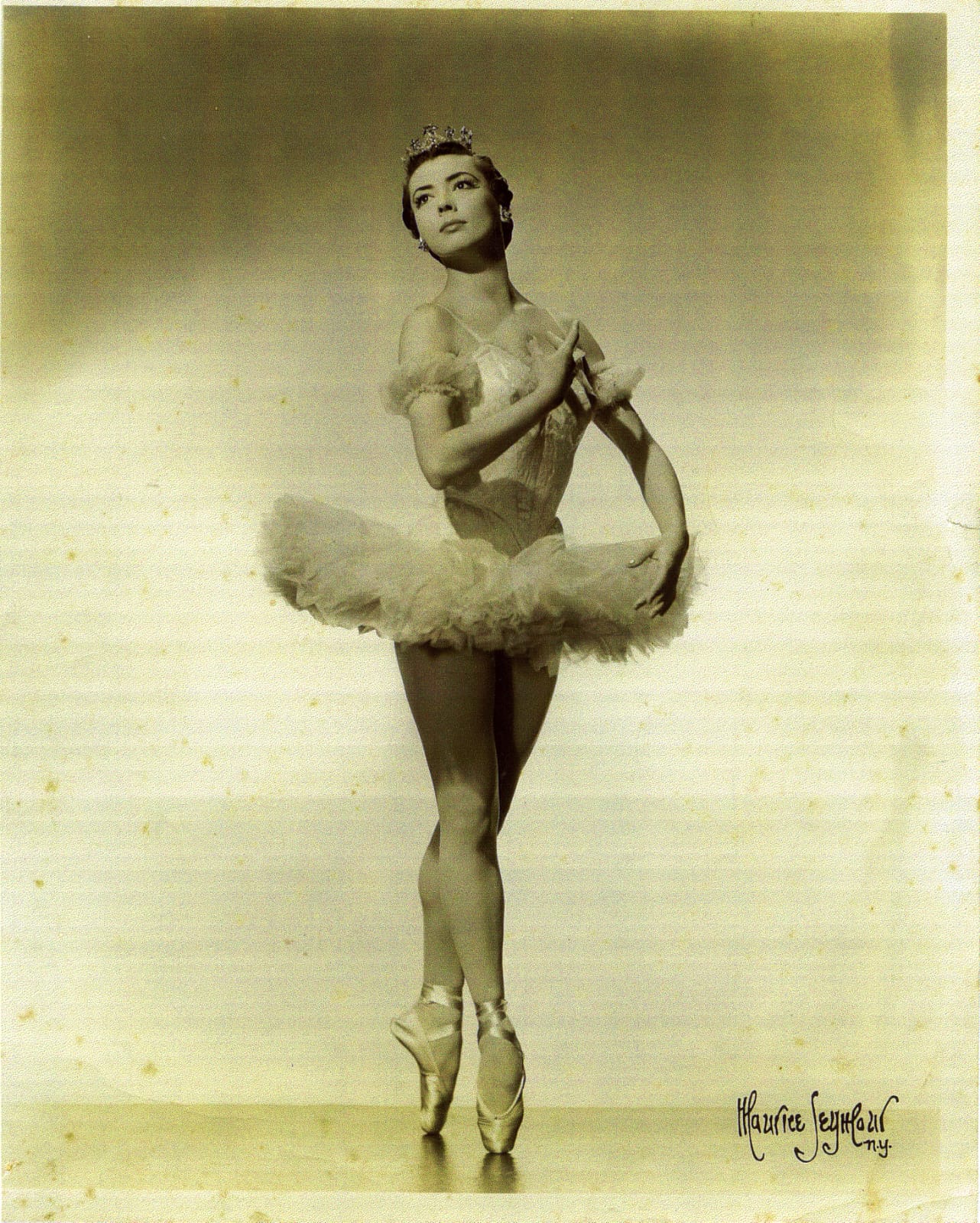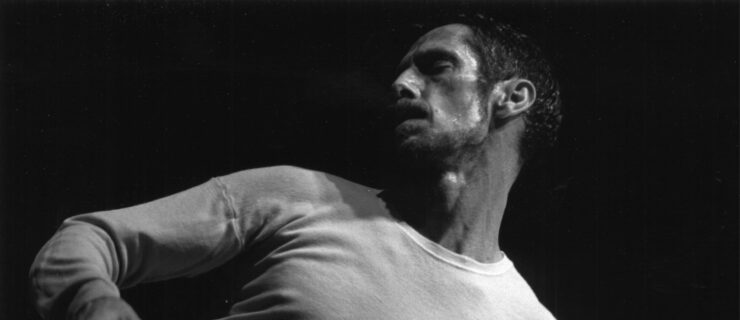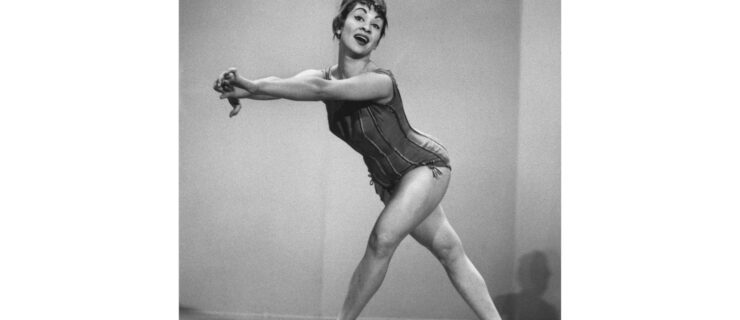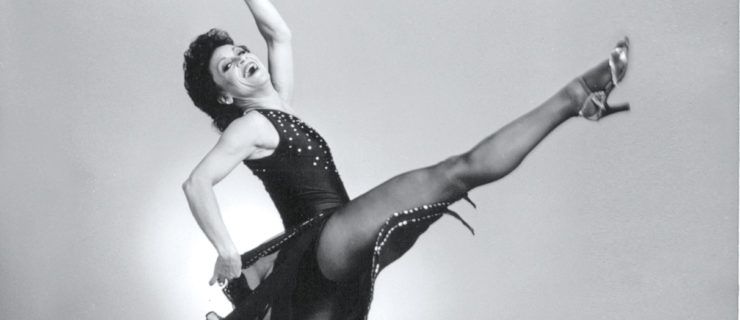In Memory of Nina Novak, 1923–2022
Nina Novak was born Janina Nowak on March 23, 1923, in Warsaw, Poland, and at age 8 began her classical ballet studies at the Warsaw Opera Ballet School. She joined the Polish National Ballet at 16, and performed with the company at the 1939 New York World’s Fair. Immediately after the World’s Fair the company returned to Poland, before World War II broke out, having been advised that things were safe there.
World War II would prove tragic to her family: Her father died in Dachau and her brother Józef died in Auschwitz. Novak herself was sent to a labor camp in Jena, ultimately surviving and being reunited with the remaining members of her family. After the war, Novak emigrated to the U.S. with her first husband, an American soldier. Settled in New York, she began training with Tatiana Chamié, then joined the Ballet Russe de Monte Carlo in 1948 on Mrs. Chamié’s recommendation, staying with the company until its folding in 1963.
Novak’s spirit of discipline and perseverance led to a dazzling artistic career. Naturally suited to character and demi-character roles in the classical repertoire, she became the prima ballerina of the Ballet Russe de Monte Carlo and one of its main stars, joining the company on tours of the U.S. and South America. Her performances in Gaîté Parisienne, Coppélia, Giselle, Paquita, Swan Lake and other roles of the established repertoire were accompanied by new productions, such as The Mute Wife, choreographed by Antonia Cobos in 1944, and the 1955 company premiere of La Dame à La Licorne, choreographed by Heinz Rosen and with a cast that included Irina Borowska and Igor Youskevitch. Along with Youskevitch, Novak’s notable Ballet Russe partners included Leon Danielian, Alan Howard, George Zoritch, Duncan Noble, Eugene Collins, Frederic Franklin, Robert Lindgren and Juan Giuliano. In 1961, she was invited to perform Giselle and Swan Lake in Poland, and her return was a critical success as well as an emotional reunion with her family.
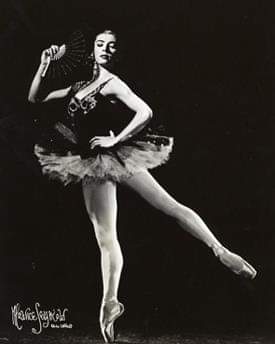
Novak visited Venezuela for the first time during the 1952 Ballet Russe season, and in 1963 settled there with her second husband, the Venezuelan diplomat Román Rojas Cabot. She became part of Venezuela’s budding ballet scene and opened her own ballet company in a studio provided by the Ateneo de Caracas. Her company’s repertoire would include Giselle, The Nutcracker, Coppélia, Les Sylphides, La Fille Mal Gardée, Ballet Imperial, Walpurgisnacht, Don Quixote and Paquita divertissements, and the Polovtsian Dances from Prince Igor, among other pieces from the classical repertoire. She also led a successful ad hoc Ballet Russe tour to Spain, France and Morocco in the summer of 1967.
Her passion for teaching developed during her Ballet Russe years, and her time as the company’s maîtresse de ballet would prove extremely useful in this part of her life. In 1972 she married her third husband, Vladimir Ziloff, and opened the ballet school Academia de Ballet Clásico Venezolano Nina Novak. A very warm person, Novak was always willing to help whoever needed her advice and guidance, and to be a link to the fabled past of the Ballet Russe. Many international ballet teachers were brought as guests, starting with her brother Edmund Novak and her sister-in-law Irina Kowalska, also of the Ballet Russe roster. She developed many talented dancers during this period, and her company held nearly 250 performances in Venezuela, the Caribbean and Central America.
Novak retired from the stage in 1984. That same year, Vicente Nebrada, artistic director of the ballet company associated with the Teresa Carreño Cultural Complex, invited her to become a répétiteur of the classical repertoire, a position she held until 1989. An important landmark during these years would be her role of Lady Capulet in the 1987 Nebrada staging of Romeo & Juliet, a role she reprised in the 1993 season. After a tribute performance, Novak was bestowed with the prestigious Francisco de Miranda order, in its first class, a decoration that honors people who have contributed to the development of science and the arts in Venezuela.
In 1990 Novak received official funding to form a small company, named Ballet Clásico de Cámara, consisting of five couples that performed the most important classical pas de deux throughout Venezuela and in Buenos Aires in 1992. During her long career as a ballet teacher, Novak’s students would go on to obtain international recognition in many competitions and hold leading positions in national and international companies, such as the Royal Ballet, Staatsballett Berlin, San Francisco Ballet, Cleveland Ballet, Hamburg Ballet and The Washington Ballet.
In September 2006, she participated in staging the complete Swan Lake with the Ballet Teresa Carreño. In 2000 she was part of the Ballet Russe de Monte Carlo reunion in New Orleans, and she can be seen in the acclaimed 2005 Ballets Russes documentary directed by Dayna Goldfine and Dan Geller.Novak left Venezuela in 2016, spending her last years between Poland, Florida and Philadelphia, where she died on March 15, 2022. She is survived by four nephews and nieces in the U.S., and 12 grand-nephews and -nieces in Poland.
